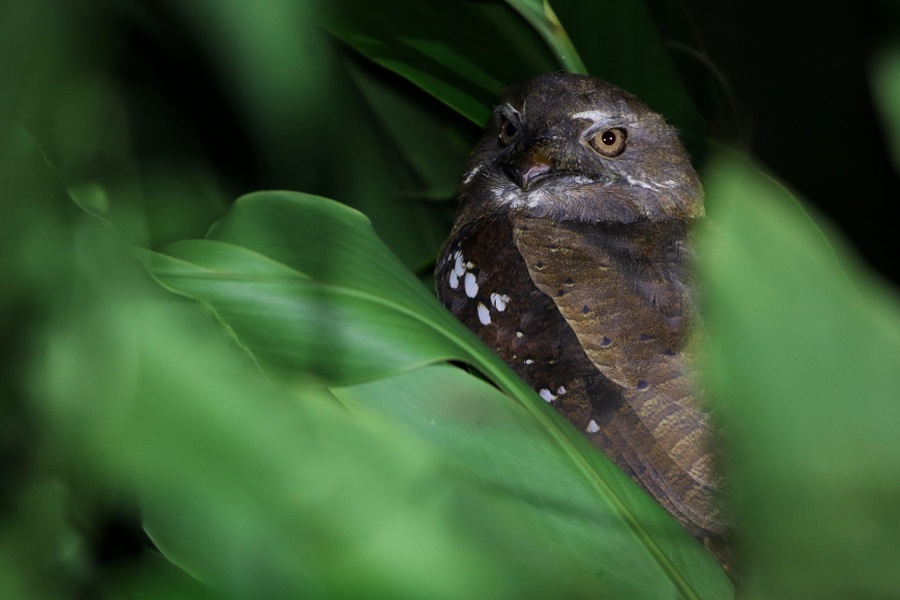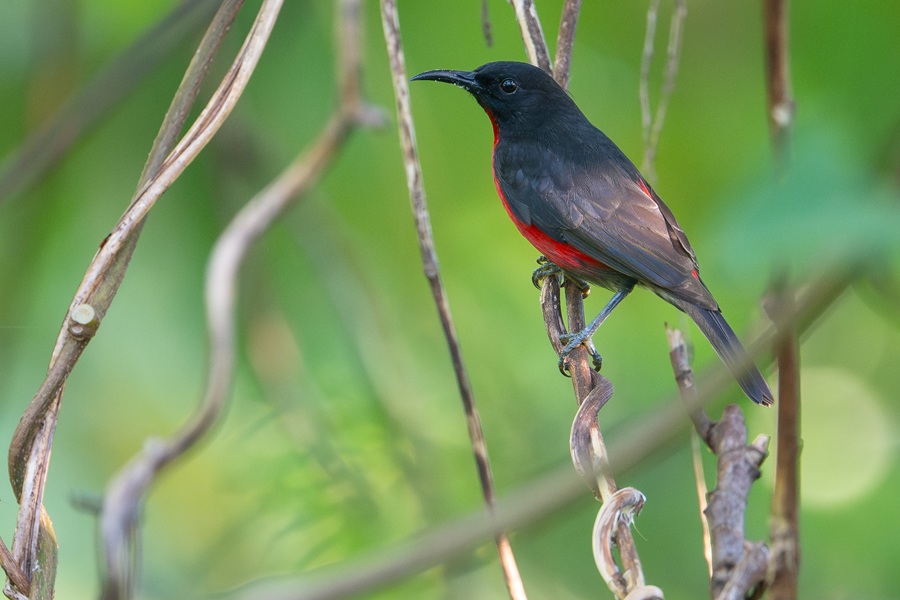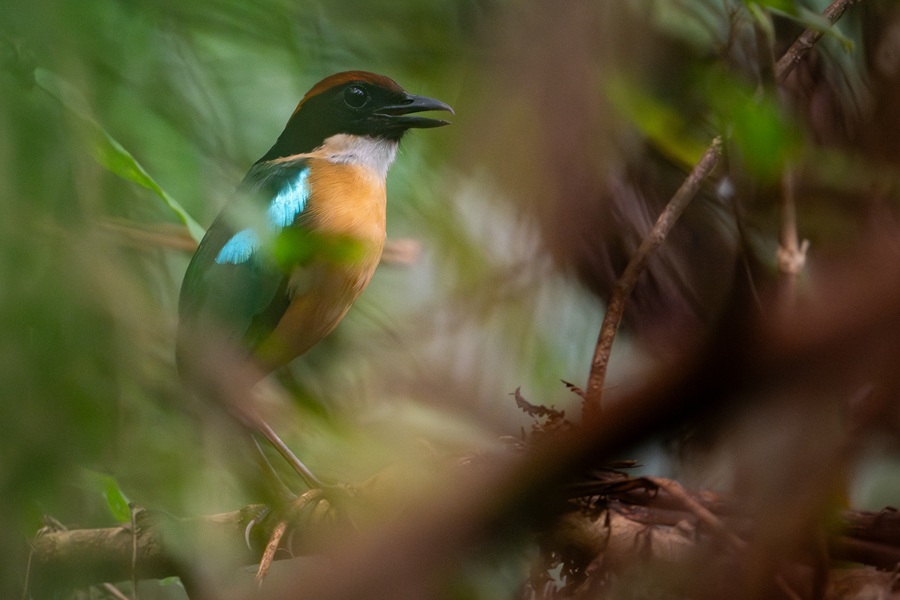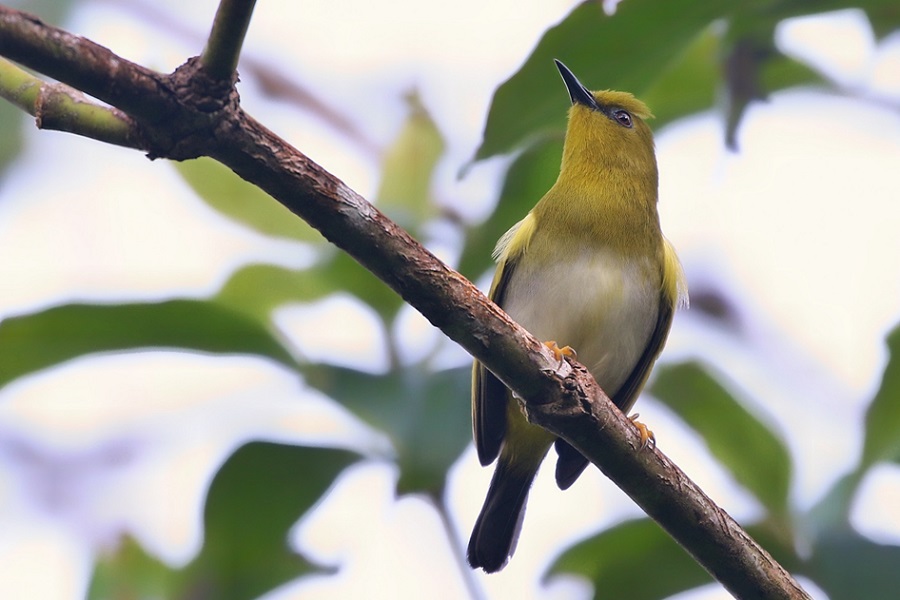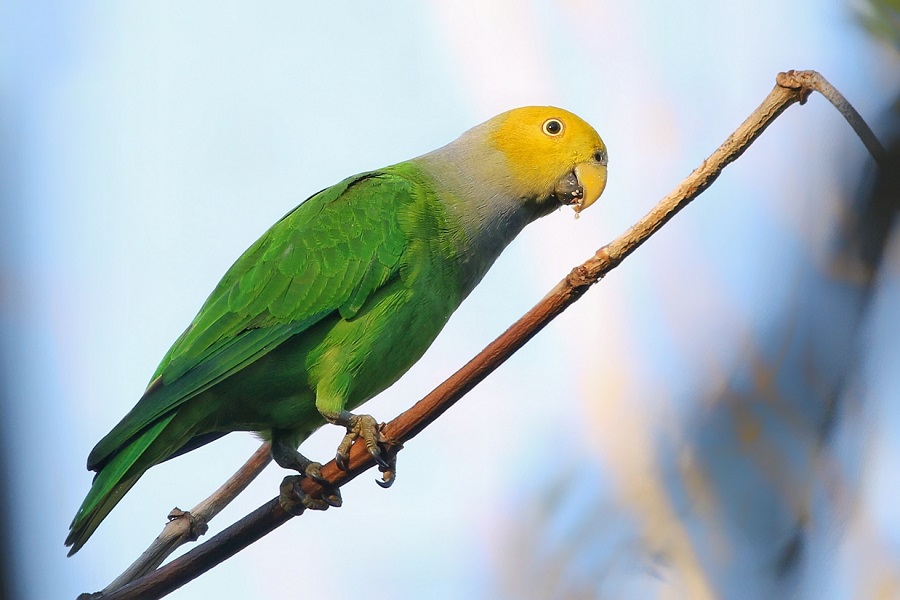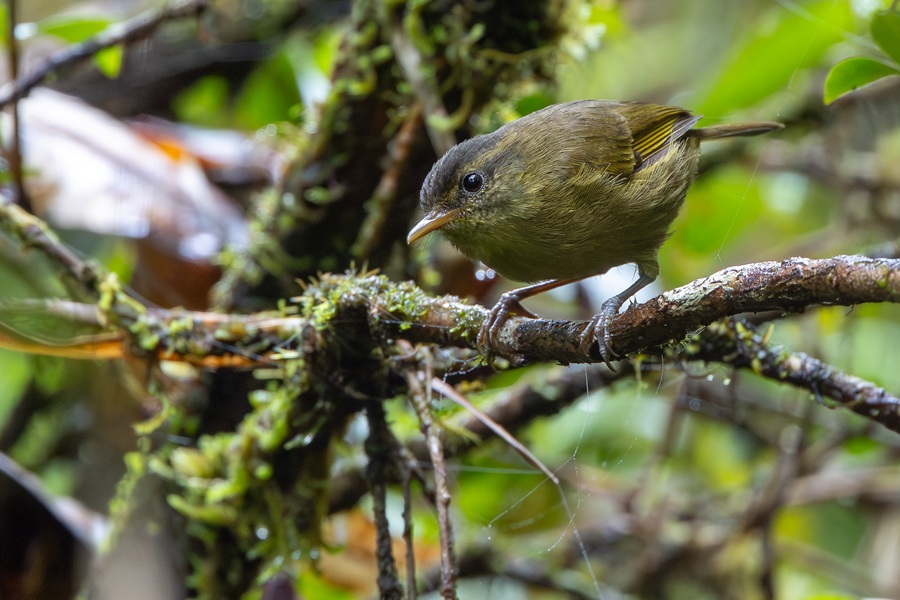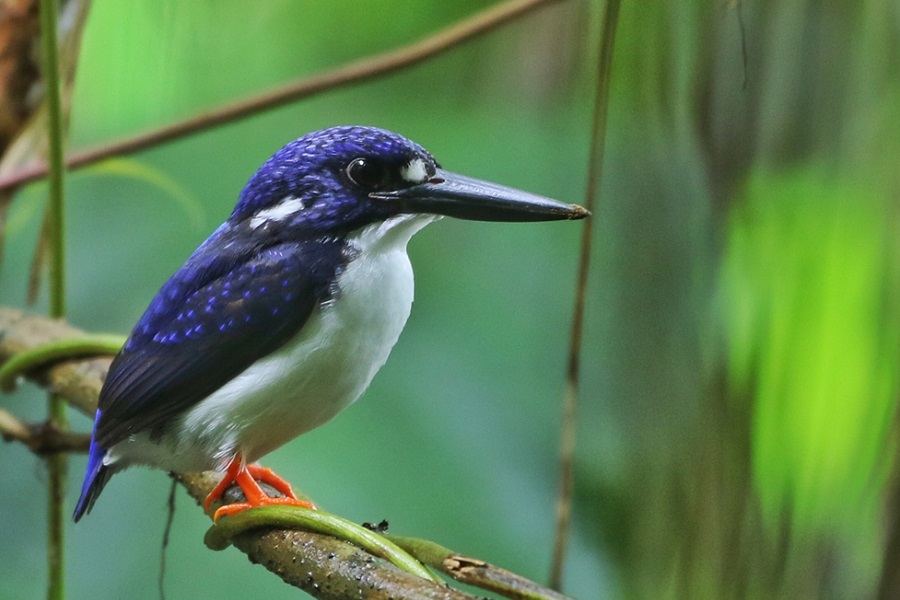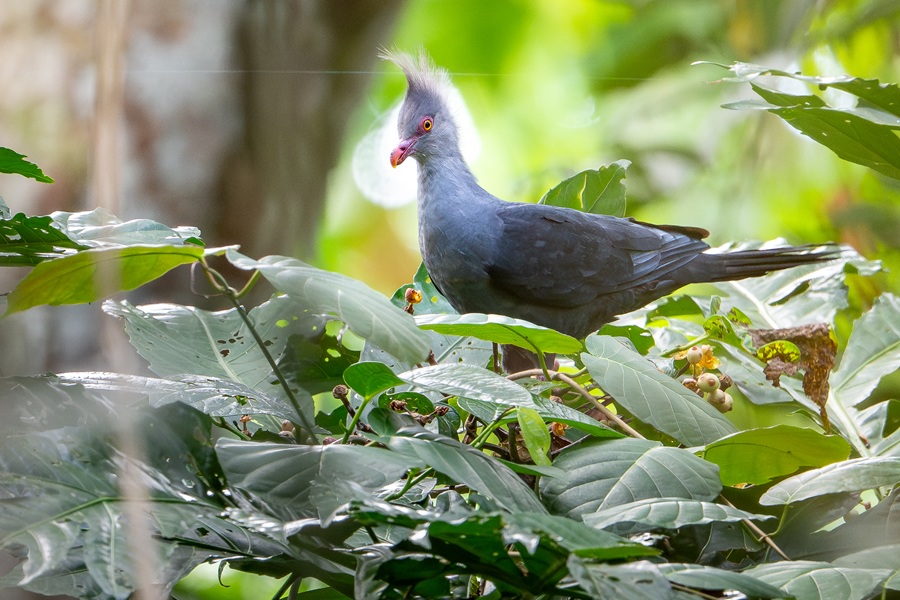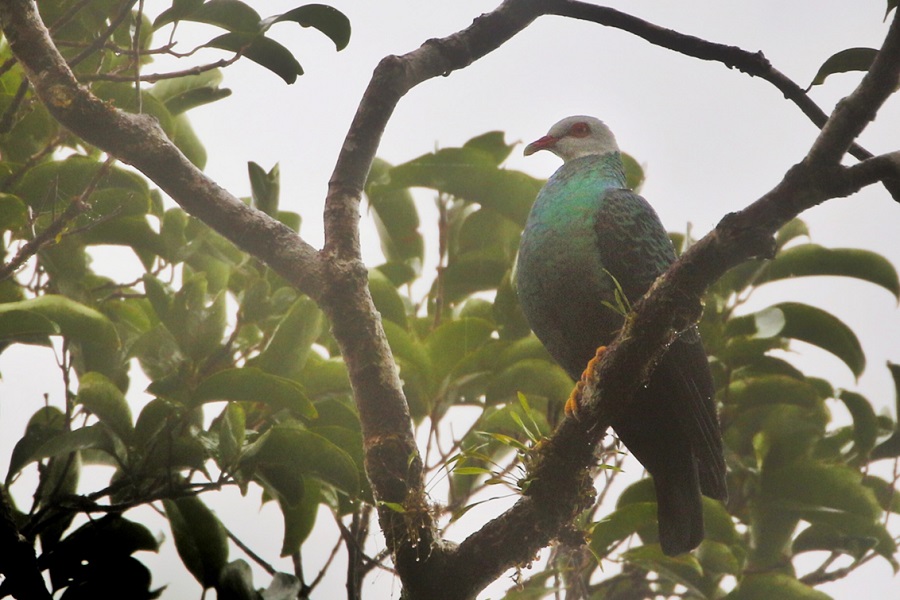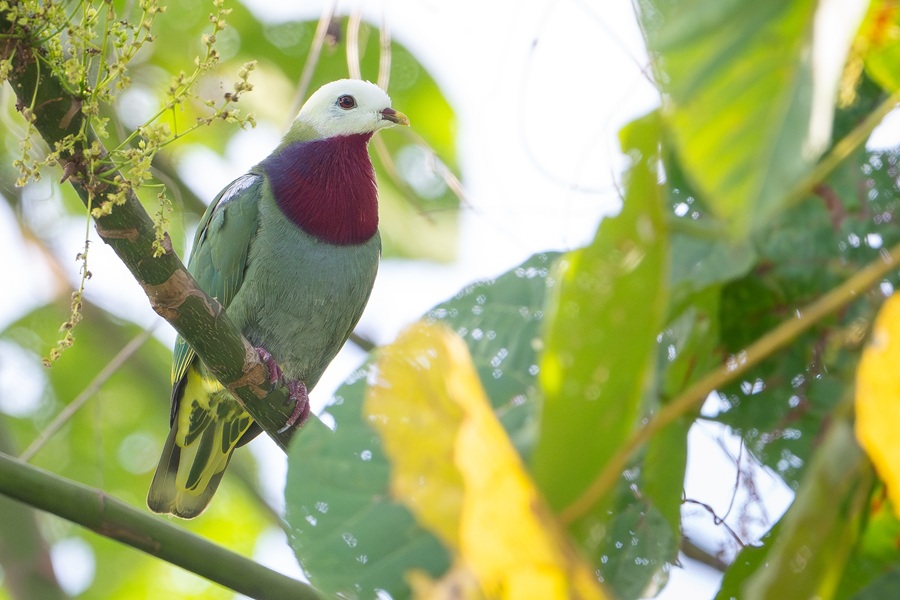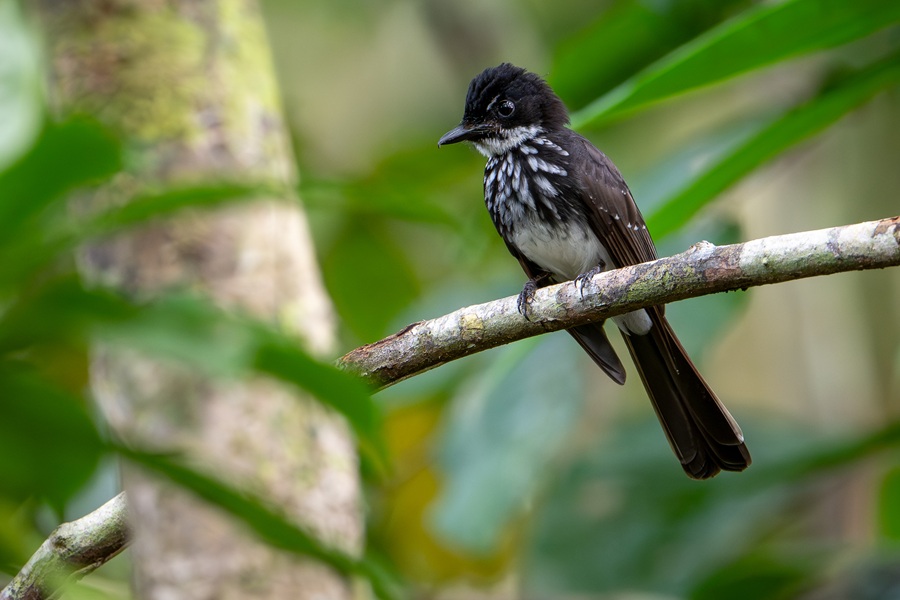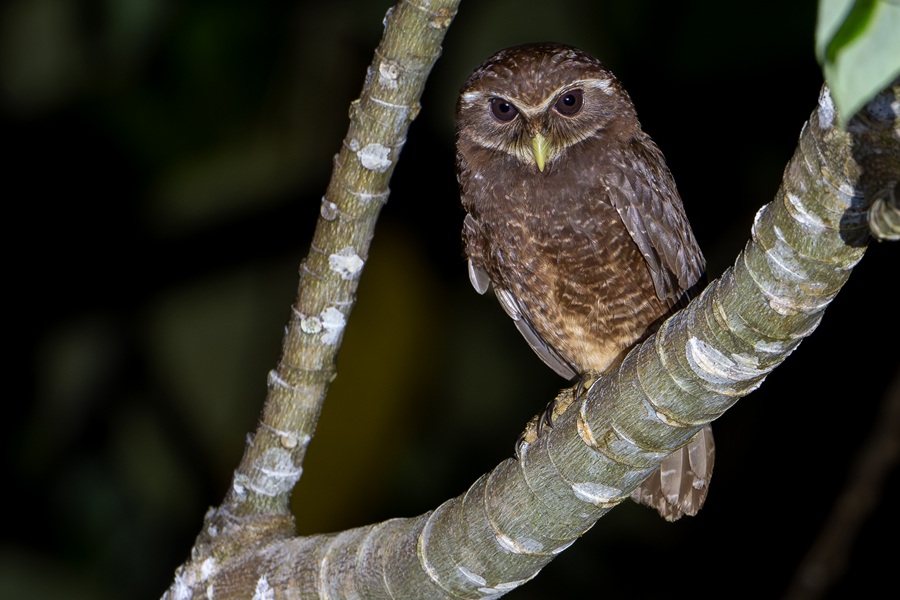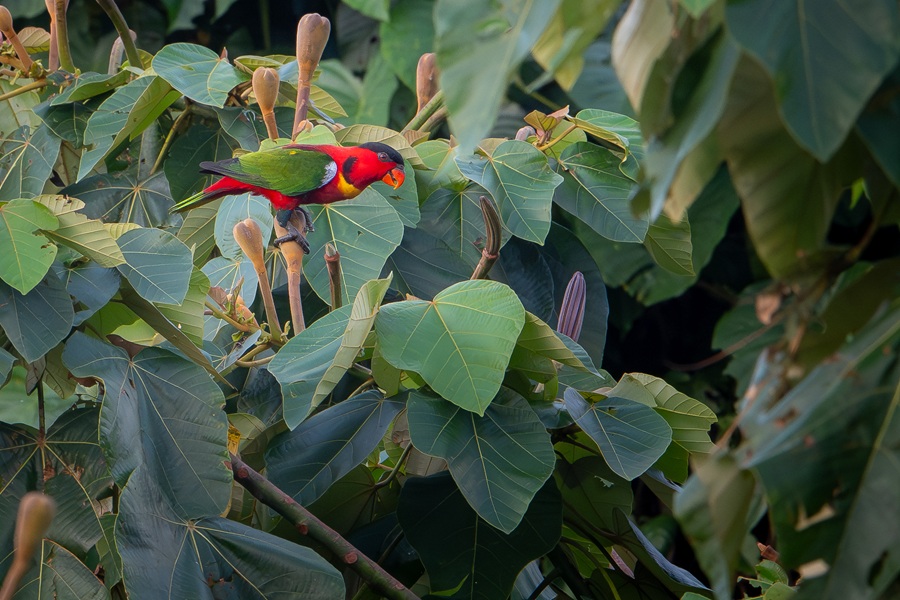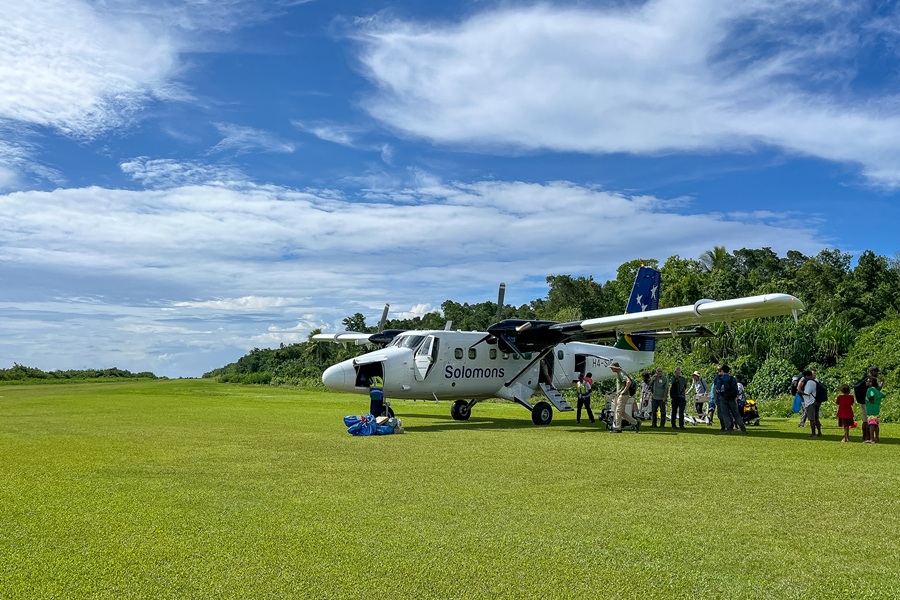Solomon Islands
Magnificent, but often skulking birds. Mud, sweat, extended slippery treks, steep mountains, shaky logistics, and constant battles with land access. This is what a Solomon Islands tour is all about, but these sleepy, forgotten islands in the southwest Pacific hold some glorious, very rarely observed birds that very few birders will ever have the privilege to see. Although the total area of this archipelago is smaller than Belgium, these rich islands have more range-restricted species than any other Endemic Bird Area in the world! With a lot of hiking, a bit of cursing, and a pinch of luck, we have a chance to record up to 85 endemics.
Next Dates
25 July - 25 August 2026 (32 days)
Leaders:
Julien Mazenauer
Group Size Limit:
7
Single Room Supplement: $
850 USD
Deposit: $
1500 USD
Price: $
15600 USD
Add a Title
Leaders:
Julien Mazenauer
Group Size Limit:
Add a Title
Single Room Supplement: $
TBD
Deposit: $
TBD
Price: $
TBD
We often need to modify the exact length of this tour to fit with changing domestic flight schedules. Exact timings will be confirmed six months before the tour, but until this time it is important that all booked participants remain available to travel one week either side of our advertised start/end dates. Please contact us if you have any concerns.
Accommodation:
The town-based hotels in Honiara and Gizo are of good standard, but we will otherwise be staying in a mix of moderate to basic guesthouses and huts, usually with cold water and shared facilities. There is only one night of actual camping, and only for those who choose the make the tough hike up Kolombangara.
Walking difficulty:
This is a strenuous tour, probably more so than any of our other tours. To ensure full participation, participants should be prepared for regular hikes (often on consecutive days) exceeding 4 hours on steep and muddy trails. Some participants opt to skip the 8 hour full ascent of Kolombangara, but our new route up the south flank trialled in 2025 is not as hard as the old route up the west flank.
Tour cost includes:
All accommodation, main meals, drinking water, internal flights (as stated in itinerary), overland transport, tips to local drivers and guides, travel permits, entrance fees, and guide fees.
Tour cost excludes:
Flights before and after the tour start/end, visa, travel insurance, tips to tour leaders, laundry, drinks, and other items of a personal nature.


This is our most comprehensive Solomon Islands tour along the classic route which aims to access every possible endemic, requiring steep and strenuous hikes on multiple islands. For those who wish to see our easier and shorter Highlights version, click here!
GUADALCANAL
The capital city of Honiara acts as our base for the tour, and we will be flying in and out of here to go between islands. We will often take the opportunity to switch out our luggage at the hotel, depending on the requirements for each leg of the trip. There are several access points to good forest, which will allow us to see our first of the multi-island endemics, such as Sanford’s Sea Eagle, Solomons Cockatoo, Yellow-bibbed Lory, Cardinal Lory, MacKinlay’s Cuckoo-Dove, Ultramarine Kingfisher, Woodford’s Rail, Solomons Brush Cuckoo, Buff-necked Coucal, White-billed Crow, Solomons Cuckooshrike, Central Melanesian Cicadabird, Solomons Monarch, Chestnut-bellied Monarch, Steel-blue Flycatcher, cinnamomea Oriole Whistler, cockerelli White-winged Fantail, Solomons Rufous Fantail, Midget Flowerpecker, and Brown-winged Starling. More widespread Melanesian endemics include Song Parrot, Finsch’s Pygmy Parrot, Claret-breasted Fruit-Dove, Melanesian Kingfisher, and Central Melanesian Cicadabird. In terms of the island’s true endemics, we will target Guadalcanal Owl, Guadalcanal Dwarf Kingfisher, and Black-headed Myzomela. The scarce White-eyed Starling (strictly speaking, also shared with Bougainville, but extremely rare there) will be on our minds, but it is hard to guarantee. The remaining highland endemics on this island require a very complex hiking expedition, best saved for another trip!
SANTA ISABEL
After a two-hour walk from the coast up to Tirotonga Village, we will get settled in before an initial spotlighting session will hopefully already provide us with Solomons Frogmouth. Now placed in an endemic monotypic genus, the species is very far removed from all others across Australasia! West Solomons Owl is usually fairly easy, but only good luck will allow us to see the amazing Fearful Owl (which is often heard but typically remains out of sight unless our excellent local team can find us a roost). The other main drawcard here is Black-faced Pitta, the easternmost representative of this excellent family of birds. It is sometimes tricky to see, but we will have several days to maximise our chances. Other specialties include North Solomons Dwarf Kingfisher, Red-capped Myzomela, Yellow-throated White-eye, and the endemic subspecies of Woodford’s Rail.
RENNELL
The most relaxed island on our tour, this entirely flat atoll offers largely unafraid endemics and thus excellent opportunities for photography, which are not regular elsewhere in the Solomons! The island’s endemics include the stunning Rennell Shrikebill and Bare-eyed White-eye, alongside the imaginatively named Rennell Whistler, Rennell Fantail, Rennell Gerygone, Rennell White-eye, and Rennell Starling. This is also the best place to see the newly-split Vanikoro Island-Thrush. Endemic forms of Australian White Ibis, Song Parrot, and Cardinal Myzomela may all be considered future splits, while the striking Silver-capped Fruit Dove is a near-endemic not easily seen elsewhere. Much of the other avifauna here has a decidedly Vanuatuan influence, so we can also expect Pacific Kingfisher, Pacific Imperial Pigeon, and Melanesian Flycatcher. We should also see the endemic Rennell Flying-fox among the more numerous Pacific Flying-fox.
WESTERN ISLES
Aided by island-hopping speedboats, we will be birding across five different islands in this beautiful province. First on Tetepare, the paradoxically-named Dark-eyed White-eye and threatened Solomons Nightjar will be our primary goals, alongside our first Western Isles endemics like the gorgeous White-capped Monarch and Crimson-rumped Myzomela, with plenty of albina White-winged Fantail. This is the best site for Melanesian Megapode and Beach Kingfisher, plus we may also see Little Kingfisher, Island Imperial Pigeon, Moustached Treeswift, and potentially Dugong.
Crossing to Kolombangara, we have our first chance for Heinroth’s Shearwater. This poorly-known species is thought to breed inside the crater rim, and we can usually expect to see at least one over the subsequent days while moving between islands in this area. On the island itself, we will search out the flightless endemic Roviana Rail, along with Western Isles endemics like New Georgia Dwarf Kingfisher and Solomons White-eye. This is also the best place to see North Melanesian Cuckooshrike. Those who are able to hike up to the summit of the volcano will hopefully be rewarded with the enigmatic Kolombangara Leaf Warbler, plus Kolombangara Monarch, Kolombangara White-eye, Solomons Island-Thrush, pallescens Island Leaf Warbler, centralis Oriole Whistler, plus a good chance for both Meek’s Lorikeet and Pale Mountain Pigeon.
Finally, we will be based on Gizo, where the Endangered endemic Gizo White-eye will entertain us for one morning. Island-hopping day trips to the north feature two separate landings will see us targeting the newly-split Vella Lavella Monarch, along with Ranongga White-eye and Vella Lavella White-eye. Two very distinctive subspecies are also likely to be seen: the dot-breasted lavellae White-winged Fantail, and the beautiful melanonota Oriole Whistler.
MAKIRA
There is a lot of hiking on “Sky Island”, as the locals call it, so named for the perpetual clouds. However, after we hike in from the coast (aided by a small canoe to make thirteen river crossings!), we will arrive at the welcoming Na’ara Village and be immersed in some exceptional birdlife. This is the best island on which to see three rare Columbiformes: the bizarre Crested Cuckoo-Dove, the scarce Yellow-legged Pigeon, and the elegant Chestnut-bellied Imperial Pigeon. We should also see plenty of Pied Goshawk and a particularly stunning Solomons endemic, the Duchess Lorikeet, more common here than any of the other islands. There are another fifteen extant endemics: White-headed Fruit-Dove, Makira Dwarf Kingfisher, Makira Owl, Sooty Myzomela, Makira Honeyeater, Makira Cicadabird, Makira Starling, Makira Fantail, Makira Flycatcher, Makira Thrush, Makira Leaf Warbler, White-collared Monarch, Shade Bush Warbler, Mottled Flowerpecker, and Grey-throated White-eye. The endemic longirostris Spangled Drongo looks like it probably should have been split on sight, while christophori Oriole Whistler is another good candidate for becoming a future endemic. If we have extra time we aim to spend a morning on the offshore island of Ugi for the all-dark ugiensis Chestnut-bellied Monarch, the shy squamulatus White-collared Monarch, and dark-throated ugiensis Rufous Fantail.
MALAITA
This island has some of the least accessible forest, but due to recent taxonomic shifts there are now an enticing set of endemics to find! Around our accommodation in the hills, we should easily find stunners like Malaita Owl and Red-vested Myzomela, while the forest edges host Malaita Monarch, Malaita Cuckooshrike, and Malaita White-eye. Further exploration should produce Malaita Dwarf Kingfisher and White-gorgeted Fantail, but since Malaita Fantail occurs only on the highest peaks we will certainly focus on exploring any new logging roads which might get us to the right altitude. Several distinct endemic subspecies include Woodford’s Rail, Midget Flowerpecker, a white-eyed form of Brown-winged Starling, and the very distinctive sanfordi Oriole Whistler.
NENDO
A far-flung outpost of the Solomons, this is the largest island in the Santa Cruz province and holds the Endangered and striking Santa Cruz Shrikebill. There are four other specialties, these being Nendo Whistler, Temotu Rufous Fantail, Sanford’s White-eye, and Santa Cruz White-eye. There is also an endemic orange-breasted form of Pacific Kingfisher, while Rusty-winged Starling is much easier to see here than in Vanuatu. On a satisfactorily calm day during our stay, we will make the crossing to Tinakula, a small volcano to the north of Nendo. Being entirely rat- and cat-free, the Endangered near-endemic Santa Cruz Ground Dove persist here in good numbers, despite being extinct elsewhere in the Solomons and rare in the Vanuatu highlands (the species may soon be uplisted to Critically Endangered). Similarly, Palm Lorikeets are prolific, and we should see these threatened parrots feeding in coconut palms. Other birds on Tinakula include the endemic, distinct subspecies of Polynesian Starling (separated from the nearest birds in Fiji by over 1000 kilometres of open water), wintering Pacific Long-tailed Cuckoo, and the Melanesian endemic Red-bellied Fruit Dove. Tropical Shearwaters are thought to breed on the island and may be seen when crossing from Nendo.

